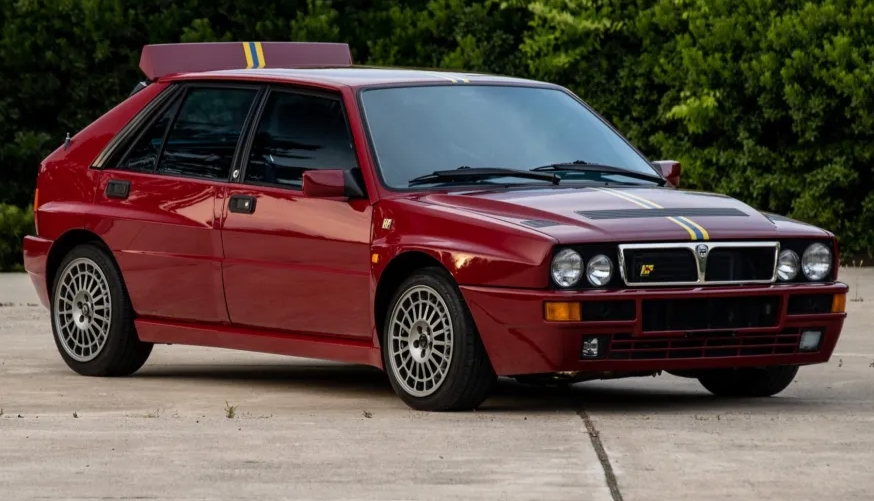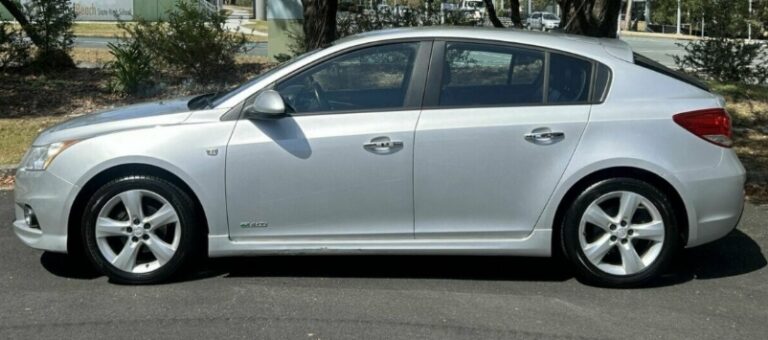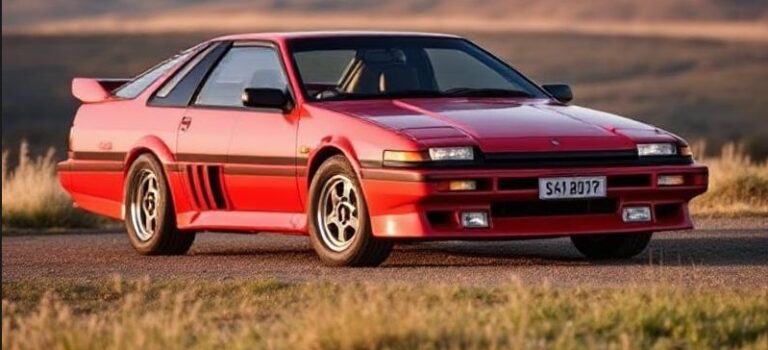The Lancia Delta: An Evolution of Identity
In the pantheon of automotive legends, few names evoke such a complex and passionate range of emotions as the Lancia Delta. It is a car of profound duality: a celebrated design icon that won European Car of the Year, a humble family hatchback that served millions, and, most famously, a fire-breathing, mud-slinging rally god that dominated motorsport with an iron fist. The story of the Lancia Delta is not one of linear progression but of three distinct, almost separate, lives, each reflecting the changing fortunes and philosophies of its parent company. From a crisp Giorgetto Giugiaro masterpiece to a forgotten Fiat-based successor and finally a controversial luxury reinvention, the Delta’s evolution is a fascinating journey through automotive history.
First Generation (Tipo 831): The Birth of a Legend (1979–1994)
The Lancia Delta was born from a brief for a sophisticated, premium family car. Lancia, then firmly under Fiat’s control, sought to create a C-segment hatchback that could compete with the likes of the Volkswagen Golf but with a distinctly Italian flair for style and engineering. They commissioned the master of automotive design, Giorgetto Giugiaro of Italdesign, who delivered a masterpiece of crisp, trapezoidal lines and intelligent packaging.
Launched at the 1979 Frankfurt Motor Show, the Delta was an immediate critical success, lauded for its sharp looks, refined ride, and high-quality interior. It was crowned European Car of the Year for 1980, a testament to its brilliant core design.
Early Models & Trim Levels (1979-1986):
The initial Delta range was modest and focused on comfort and usability rather than outright performance.
Delta 1300: Equipped with a 1301cc SOHC four-cylinder engine producing 75 hp, available in base and more luxurious LX trim.
Delta 1500: Utilized a 1498cc engine with 85 hp, offering more torque for relaxed driving. This was also available in base and LX trims, with options like a 3-speed automatic gearbox.
Delta GT 1600: Introduced in 1982, this was the first hint of sportiness. It featured a 1585cc DOHC engine with 105 hp, offering a genuinely spirited driving experience. This evolved into the GT i.e. with fuel injection in 1986, boosting power to 108 hp.
Delta HF Turbo: Launched in 1983, this was the true genesis of the performance Delta. It used the 1.6-litre engine but added a Garrett T3 turbocharger and an intercooler, producing a potent 130 hp (later 140 hp with fuel injection). Crucially, it remained front-wheel drive, but it laid the groundwork for what was to come.
The Integrale Era: Forging a Motorsport Dynasty (1986-1994):
The Delta’s destiny was irrevocably altered by the dramatic implosion of Group B rallying. When the wildly dangerous category was banned at the end of 1986, the new top-tier Group A regulations required manufacturers to compete with cars much closer to their production counterparts. Lancia, needing a replacement for its S4 Group B monster, found the perfect platform in its unassuming Delta. To meet homologation rules for Group A, Lancia had to build a four-wheel-drive production car. The result was the Delta HF 4WD of 1986. It combined the 2.0-litre turbocharged engine from the Lancia Thema with a sophisticated permanent all-wheel-drive system featuring a Ferguson viscous coupling centre differential and a Torsen rear differential. It produced 165 hp and was an instant rally weapon, winning the 1987 World Rally Championship.
This was just the beginning. The HF 4WD evolved into a series of homologation specials, each more potent and aggressive than the last, creating the legend of the “Integrale”.
Delta HF Integrale 8v (1987-1989): The first to bear the iconic name. Power from the 2.0-litre 8-valve engine was up to 185 hp. Visually, it was distinguished by its blistered, muscular wheel arches to accommodate a wider track and bigger wheels. It was an immediate success, dominating the 1988 WRC season.
Delta HF Integrale 16v (1989-1991): The next step in the arms race. A new 16-valve cylinder head pushed power to 200 hp. This model is instantly recognisable by its prominent bonnet bulge, required to clear the new cylinder head. The torque split was also revised, sending more power to the rear wheels for a more agile feel.
Delta HF Integrale “Evoluzione” (Evo I) (1991-1993): The ultimate evolution for rally homologation. The track was widened even further, requiring dramatically extended and more aggressive box arches. The suspension and brakes were heavily upgraded, the steering was strengthened, and the engine was tweaked to 210 hp. It was a rally car for the road in its purest form and cemented the Delta’s sixth consecutive WRC Manufacturer’s title in 1992.
Delta HF Integrale “Evoluzione II” (Evo II) (1993-1994): With Lancia having officially withdrawn from rallying, the Evo II was a final road-going celebration. It was not built for homologation but to satisfy immense customer demand. It featured an updated 16v engine with a new turbo and engine management system, producing 215 hp. It came with 16-inch alloy wheels as standard and a more refined interior.
Alongside these main models, a series of highly collectible limited editions were produced, including the iconic Martini 5 and Martini 6, the Verde York, Blu Lagos, and the final Gialla Ginestra.
Second Generation (Tipo 836): The Difficult Second Act (1993–1999)
Following the monolithic success of the first generation was an impossible task. By the early 1990s, Fiat’s strategy for Lancia had shifted away from motorsport dominance towards producing comfortable, elegant, and slightly quirky premium cars. The second-generation Delta, launched in 1993, was a product of this new reality.
Based on the Fiat Tipo platform (which also underpinned the Fiat Tempra and Alfa Romeo 155), the new Delta abandoned the Giugiaro-penned boxy design for a rounded, aerodynamic look typical of the 1990s. It was exclusively a five-door hatchback until the introduction of a three-door version later. It lost the all-wheel-drive system that had defined its predecessor, a decision that alienated hardcore enthusiasts from the start.
Models and Trim Levels:
The range was designed to be a competent, upmarket family car, not a performance icon.
Base Engines: The range opened with a 1.6-litre engine (75 hp), followed by a 1.8-litre (103 hp) and a naturally aspirated 2.0-litre 16v (139 hp). A 1.9-litre turbodiesel was also offered.
Trim Levels: These typically followed the Lancia hierarchy of LE, LS, and the range-topping LX, which featured Alcantara upholstery, climate control, and alloy wheels.
HF Turbo (1993-1999): The spirit of the original lived on, in name at least, with the new HF. It used a 2.0-litre 16v turbocharged engine derived from the Integrale but detuned to 186 hp (later 193 hp) and powering only the front wheels. While a genuinely quick car for its time, its FWD layout and softer focus meant it was never accepted as a true successor to the Integrale.
HPE (High Performance Edition): Introduced in 1995, this was a sporty three-door version that shared the name with the classic Lancia Beta HPE. It was offered with 1.6, 1.8, and the 2.0 HF Turbo engine, becoming the flagship performance model of the second generation.
Ultimately, the second-generation Delta lived in the shadow of its forebear. It was a comfortable and competent car, but it lacked the charisma, engineering purity, and motorsport pedigree that made the original a legend. It sold in respectable numbers but was quietly discontinued in 1999, leaving the Delta nameplate dormant.
Third Generation (Tipo 844): A Controversial Reinvention (2008–2014)
After nearly a decade, Lancia revived the Delta name in 2008 for a completely new car that shared nothing but its name with its predecessors. Based on a stretched Fiat Bravo platform, this third generation represented another radical shift in Lancia’s philosophy, this time towards a niche “premium fashion” segment.
The design was bold and divisive. It was a large hatchback bordering on a crossover, with a long wheelbase, a distinctive “flying bridge” C-pillar, and a striking two-tone paint option. The classic Lancia shield grille was heavily stylized, and the overall look prioritized elegant cruising over aggressive performance. Its mission was to offer limousine-like rear-seat space and comfort in a hatchback body.
Models and Trim Levels:
The engine lineup was entirely modern, featuring Fiat’s advanced TurboJet petrol and MultiJet diesel engines. There was no rally-bred monster in sight.
Petrol Engines: The range included a 1.4-litre T-Jet in 120 hp and 150 hp outputs, and the flagship 1.8-litre Di TurboJet with 200 hp, which provided brisk performance but in a refined, grand-tourer manner.
Diesel Engines: These were the volume sellers, including a 1.6-litre MultiJet (120 hp), a 2.0-litre MultiJet (165 hp), and a powerful 1.9-litre TwinTurbo MultiJet (190 hp).
Trim Levels: The hierarchy was Argento (Silver), Oro (Gold), and Platino (Platinum), with options like Poltrona Frau leather, a panoramic “GranLuce” sunroof, and advanced driver aids, emphasizing its luxury focus. Special editions like the Hard Black and sporty-themed S Momodesign were also offered.
Market reception was mixed. It was praised for its cavernous interior and comfortable ride, but its avant-garde styling was not to everyone’s taste. In the UK and Ireland, where the Lancia brand was withdrawn, it was rebadged and sold, rather unsuccessfully, as the Chrysler Delta. The total lack of a high-performance, all-wheel-drive “HF” version was a final confirmation that the spirit of the Integrale was gone. Production ceased in 2014 as the Lancia brand contracted to sell only the Ypsilon model in Italy.
.

.
The Legacy of a Name
The evolution of the Lancia Delta is a tale of three cars, three philosophies, and one enduring name. It began as a beacon of intelligent Italian design, evolved into the most successful rally car of all time, and ended its life as a misunderstood luxury cruiser. While the second and third generations struggled to escape the immense shadow of the original, the entire lineage tells the story of Lancia itself—a brand of brilliant engineering, exquisite style, and often-conflicted identity. Today, as the automotive world shifts to an electric future, Stellantis has confirmed the Delta name will return once more. What form it will take is unknown, but it will carry the weight of a legacy forged in metal, mud, and glory.







